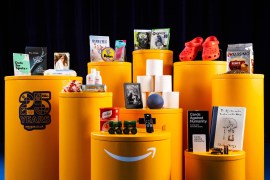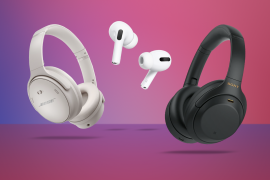Stuff meets: Daniel Rausch, Amazon’s head of entertainment devices
Amazon's entertainment devices guru on streaming trends and using old tech

The genesis of Fire TV was about eight years ago. There’s been a lot of growth since then!

Late last year we announced that we crossed over 150 million devices sold. And that’s the full range that covers £29 sticks you can add to any TV from some of the world’s most popular brands. We recently launched the Xiaomi model. A key part of our strategy is to make sure that we have a product for every customer – there are now over 100 different TV models worldwide.
We’re seeing deeper engagement on a wider range of content.
That’s a trend we saw happening before the pandemic with customers adding more and more content sources to the list that they’re choosing from. They’re interacting with more and more different applications and content sources. We saw that quicken during the pandemic… during that time we saw engagement with exercise content and education content triple as well as things like cooking content. And [since then] the breadth has stuck around. Customers are spending more time streaming, billions of hours a month through Fire TV.
All users care about is a the piece of content, they don’t want to have to think about the source.
We’ve brought some of the personalisation features that customers really like a little bit closer to the top. Your watch list is getting closer to the top of the interface. We know that customers want that content-forward experience. They just want the content right? We also see customers use voice a lot [so search] with Fire TV and asking for content categories and titles. Customers engaging with voice are very deeply engaged with Fire TV, so it creates its own momentum. The simplicity of voice creates deeper engagement. We actually see customers using voice engage twice as much with content. So that’s another thing – you’ll see us deepen voice integration. Voice is a segue into is just getting more out of your TV generally. Smart TVs just aren’t smart enough. We keep adding smart TVs to our homes but they’re not that much smarter than the TV that they replace. We have some recent data that shows Fire TV Sticks or Fire TV Cubes [are bought] by double the customers that are already smart TV owners than if they have an older television. I think customers see a real gap in the experience they actually want. They have a so-called Smart TV but it’s actually not easy enough to use or smart enough for them.
There are many more things that we can do with Fire TV for customers outside of the home.
We’ve announced a lot of different integrations with different car manufacturers. Stellantis (the conglomerate that includes Fiat, Peugeot, Jeep and Vauxhall) is probably the biggest of those so far, but we’ve also done integrations with GM and Ford. One that’s really exciting coming soon is BMW, which will roll vout here later this year. [It’s running on] the 31-inch rear seat cinematic entertainment system [in the new BMW 7 Series]. It’s fully powered by Fire TV. If you need to upgrade your television, you could just put a BMW in your living room! Eventually, everyone in the car will be taking in entertainment and for now, at least the people who can safely do so aren’t driving. That’s a big, big focus for manufacturers.
Do we think about updates years in advance? We do actually.
We just did a bit of a visioning exercise three to five years out. We imagine what we can do for customers. We want to continue to be the very best, most powerful entertainment device and entertain them any way and anywhere they want. Have that strong portfolio of options from £29 up. And there’s the theme about making TV smarter.
The TV should do more, it’s sitting there dark for much of the day.
We typically don’t make money when we sell the device… which means that you need to keep serving customers on that device. It gets rid of the customer-unfriendly disincentive, which is obsolescence. I still use, a very old Fire TV on one of my TVs. I still use an original Echo device from way back when because we love it when customers keep using one of our devices. We don’t need to create an environment where customers always have to keep changing their hardware to stay current. We’re actually thrilled when customers keep using services on older devices. And that will help us with [the long development cycles in] the auto industry because it’s part of our core strategy. It means that you know, for the timeline of a car, we can continue to deliver the best experience as well.



